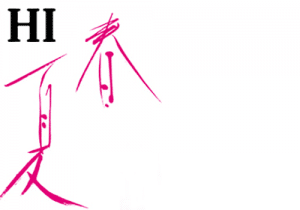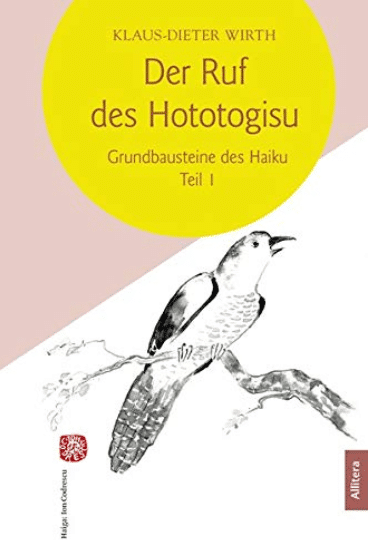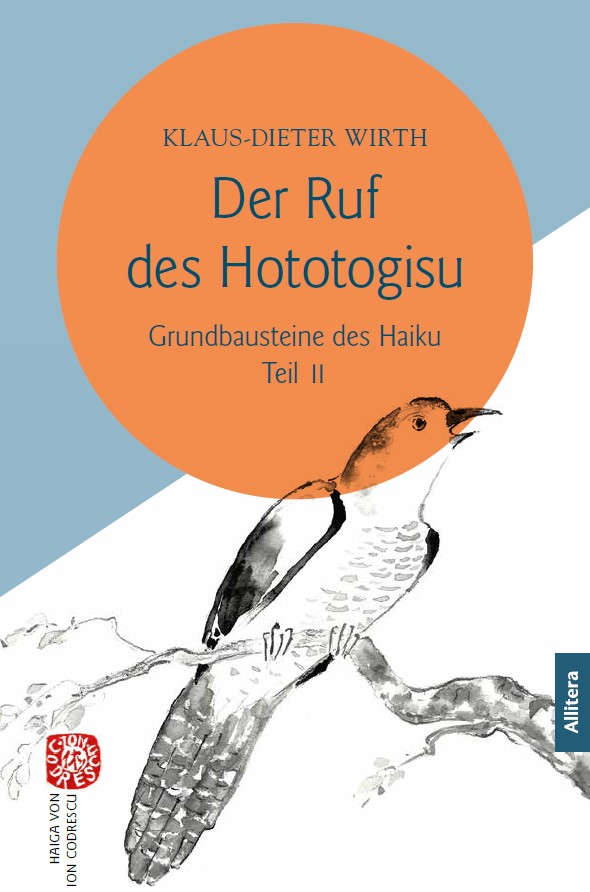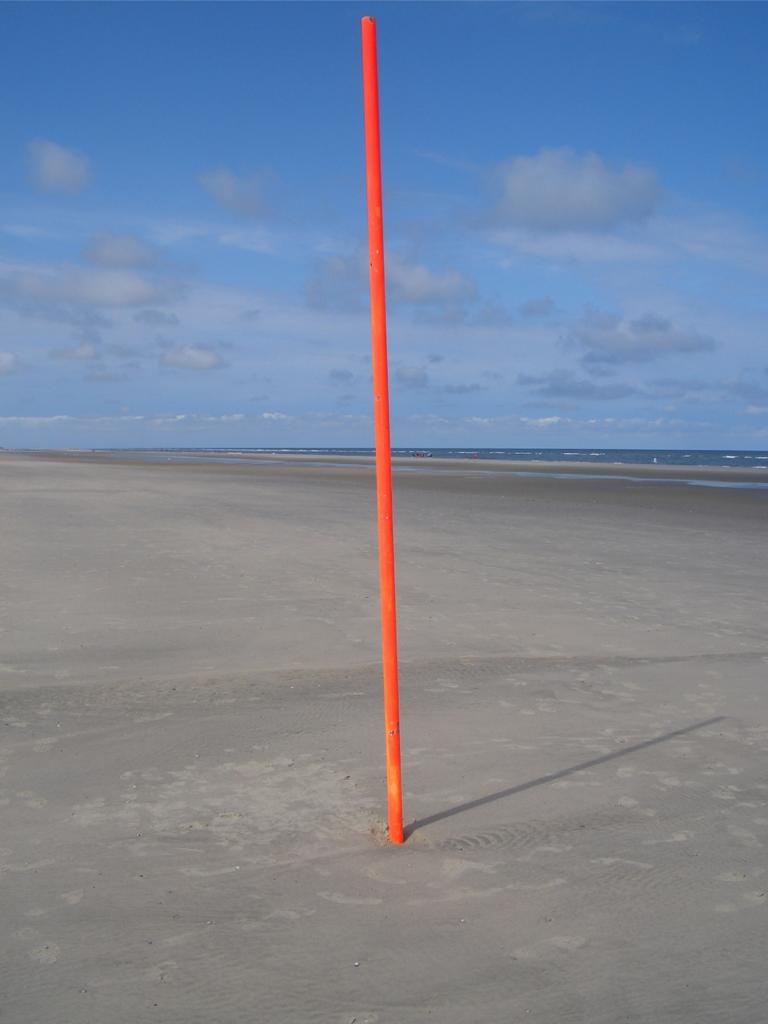Es wurden insgesamt 230 Haiku von 83 Autoren und 37 Tanka von 20 Autoren für diese Auswahl eingereicht. Einsendeschluss war der 15. Juli 2019. Diese Texte wurden vor Beginn der Auswahl von mir anonymisiert. Jedes Mitglied der DHG hat die Möglichkeit, eine Einsendung zu benennen, die bei Nichtberücksichtigung durch die Jury auf einer eigenen Mitgliederseite veröffentlicht werden soll.
Eingereicht werden können nur bisher unveröffentlichte Texte (gilt auch für Veröffentlichungen in Blogs, Foren, sozialen Medien und Werkstätten etc.).
Bitte vorzugsweise alle Haiku/Tanka gesammelt in einem Vorgang in das Online-Formular auf der DHG-Webseite selbst eintragen:
deutschehaikugesellschaft.de/haiku-und-tanka-die-auswahl/
Der nächste Einsendeschluss für die Haiku/Tanka-Auswahl ist der 15. Oktober 2019.
Jeder Teilnehmer kann bis zu fünf Texte – davon drei Haiku – einreichen. Mit der Einsendung gibt der Autor das Einverständnis für eine mögliche Veröffentlichung
in der Agenda 2020 der DHG
sowie auf http://www.zugetextet.com/
und der Website der Haiku International Association (HIA)
Haiku-Auswahl der HTA
Die Jury bestand aus Claus Hansson, Eva Limbach und Birgit Wendling. Die Mitglieder der Auswahlgruppe reichten keine eigenen Texte ein.
Alle ausgewählten Texte – 38 Haiku – werden in alphabetischer Reihenfolge der Autorennamen veröffentlicht. Es werden bis zu max. zwei Haiku pro Autor aufgenommen.
„Ein Haiku, das mich besonders anspricht“ – unter diesem Motto besteht für jedes Jurymitglied die Möglichkeit, bis zu drei Texte auszusuchen (noch anonymisiert), hier vorzustellen und zu kommentieren.
Da die Jury sich aus wechselnden Teilnehmern zusammensetzen soll, möchte ich an dieser Stelle ganz herzlich alle interessierten DHG-Mitglieder einladen, als Jurymitglied bei kommenden Auswahl-Runden mitzuwirken.
Eleonore Nickolay
Ein Haiku, das mich besonders anspricht
digital detox –
meine Finger
genießen die StilleMartin Thomas
Dieses Haiku hat mich in der großen Anzahl der eingereichten Kurzgedichte umgehend angesprochen und ist in der vorliegenden Auswahl nach sorgfältiger Bewertung mein Favorit geworden.
Der Begriff „digital detox“ springt mir förmlich ins Auge und zieht mich ins Haiku hinein. Was für ein spannendes Thema steckt doch alleine in der Anfangszeile!
Jedem sind sicherlich Detox-Diäten bekannt, die den Körper von Schadstoffen befreien sollen, die er im Zeitverlauf über die Umwelt und die Ernährung aufgenommen hat. Die Entgiftung und Entschlackung erfolgt dabei über mehrere Tage oder Wochen und kann eine spezielle Ernährung sowie Körperbehandlungen und Körperübungen beinhalten.
Beim „digital detox“ oder „digitalen Entschlacken“ sollen die Menschen während einer gewissen Zeitspanne auf die Nutzung elektronischer Geräte wie Smartphones, Tablets oder den PC verzichten. Es wird angestrebt, sich der stetigen Vernetzung und Erreichbarkeit bewusst zu werden und sich ihr während einer begrenzten Zeitspanne zu entziehen. Als Ziel werden eine Stressreduzierung und eine bewusstere Wahrnehmung der realen Welt angestrebt.
Wie mag sich ein Mensch fühlen, der seine Internetabhängigkeit und Smartphone-Sucht erkannt hat und sich ihnen für eine gewisse Zeit entziehen möchte?
Diese Frage beantworten für mich die nachfolgenden Haiku-Zeilen. Zuerst sind da „meine Finger“; Finger als Teil des Körpers stehen genau so wenig still wie der unruhige Geist. Wie der Geist sich ständig mit irgendwelchen Gedanken beschäftigt, so tasten, greifen und fühlen die Finger pausenlos. Wie empfinden Finger, die ihrer bisherigen Tätigkeit, der Dateneingabe in digitale Geräte, beraubt sind? Kribbeln sie? Suchen sie anderswo Halt oder Beschäftigung? Vermutlich weiß der Mensch mit sich und seinen Händen in der Anfangsphase der Entgiftung nicht so recht etwas anzufangen.
Die Finger kommen mit fortschreitender Entgiftung oder der bewussteren Wahrnehmung jedoch irgendwann zur Ruhe. Im Haiku ist aber nicht von Ruhe die Rede, sondern von Stille, heißt es doch „genießen die Stille“. Stille ist für mich mehr als Ruhe. Für mich werden hier die Finger zum Ausdruck der tief empfundenen Stille im Geist. Die Stille wird greifbar. Der Geist genießt die ungestörte Stille, nachdem er sich von der ständigen Erreichbarkeit durch die digitalen Medien gelöst hat.
Für mich ist damit im Haiku noch nicht alles gesagt. Es wirkt im Nachhall fort und weitere Bilder ziehen vor meinem geistigen Auge auf. Der moderne Mensch leidet nicht nur unter dem Tempo der zunehmenden Digitalisierung, sondern gewiss auch unter anderen Alltagsstörungen, Belastungen und Süchten jeglicher Art, mitunter sogar an einer Entfremdung gegenüber der Natur. So wie das „digital detox“ dauerhaft gegen die Internetabhängigkeit oder Smartphone-Sucht nur geeignet ist, wenn der bewusste Entzug immer wiederkehrend in den Alltag eingebunden wird, muss der moderne Mensch auch andere Störquellen erkennen, ihnen zuweilen entsagen und andere Wege beschreiten.
Das Haiku zeigt für mich anhand eines modernen Themas sehr gut auf, wie wichtig es ist, sich immer wieder achtsam kurze Zeiten der Ruhe zu gönnen, damit Körper und Geist zu Einklang und Stille finden können. Beim nächsten Netzausfall mag dem Genuss dann nichts mehr im Wege stehen.
Ausgesucht und kommentiert von Claus Hansson.
Fitislied
sie vergisst
dass sie nicht singen kannMartin Berner
In einer unserer Bewertungsrunden kam die Frage auf: „Was ist ein Fitislied?“
Bevor ich vor einigen Jahren begann, Haiku zu schreiben, hätte ich sicher die gleiche Frage gestellt. Doch mit dem Schreiben begann ich anders zu hören, zu schauen und zu benennen.
So brauchte ich einen ganzen Sommer lang, um einen bestimmten Vogelruf zu identifizieren. Es war der Buchfink, und heute freue ich mich jedes Mal, weil ich weiß, wer da singt.
Nun, der Fitis ist ein Laubsänger, eng verwandt mit dem Zilpzalp, und natürlich habe ich mir seinen Gesang angehört. Er ist dem des Buchfinken sehr ähnlich, und in Zukunft werde ich die beiden wohl unterscheiden können.
Vielleicht ging es auch „ihr“ so?
Und vor lauter Freude beginnt sie mitzusingen …, obwohl sie es anscheinend gar nicht kann.
Und das vermitteln mir auch die vielen i-Laute: „mit welch schriller Stimme sie ihr Lied singt …“
Ein Haiku nicht nur zum Schmunzeln und im wörtlichen Sinne ein „lustiger Vers“.
Ausgesucht und kommentiert von Eva Limbach.
Die Auswahl
laut zeternd
vereint die Amselmännchen –
eine Katze!Karin Baumgarten
im Spiegel
die Gesichter der Schwestern
in meinemChrista Beau
Fitislied
sie vergisst
dass sie nicht singen kannMartin Berner
auf unserer Brücke
mein Blick hinab
in fließende HimmelHorst-Oliver Buchholz
Abgerissenes Haus.
Wusste ich jemals
wie es aussah?Reinhard Dellbrügge
auch in meinem Teich
Kreise
von Bashōs FroschSusanne Effert-Hartmann
Antiquariat
der Geruch
der ZeitHubert Felber
drüberspringen
und wieder
mein SchattenHubert Felber
Videokonferenz,
der Star am Fenster
plustert sich aufTaiki Haijin
Auf dem Schulhof
um das letzte Stück Brot
zanken RabenErika Hannig
Sichelmond
wir lecken
unsere WundenGabriele Hartmann
Sommernacht
wir zögern vor der letzten
HäutungGabriele Hartmann
Steiniger Heimweg
in meinem Rucksack
GebeteBirgit Heid
heimkehren
in der Hofeinfahrt
wachsen PusteblumenAnke Holtz
weit draußen allein
mein Schatten
auf dem MeeresgrundAnke Holtz
Gefühle
Totholz
Im AbendlichtAngelika Holweger
all die Gedanken
im Wasser spiegeln
VergissmeinnichtAngelika Holweger
Neu verliebt –
wie er schaukelt, knirscht und quietscht
der alte Eibsee-Kahn.Manfred Karlinger
Im Café –
Die Stille
über den DisplaysDeborah Karl-Brandt
Sie treffen sich wieder
am Salatbüfett –
HainbänderschneckenDeborah Karl-Brandt
Lebensbaum
für eine Weile
anlehnenAngelika Knetsch
Mühlrad –
die neueste Version
ihrer ScheidungGérard Krebs
Noch nach Jahrzehnten
der Duft von Zigarren
in Opas SchreibtischReinhard Lehmitz
kühler Sommerabend
und dennoch
die NachtigallRamona Linke
unverhofft …
da ist wieder diese traulichkeit
tandaradeiRamona Linke
Mobilheim
die Muschelsammlung
der VormieterEleonore Nickolay
Traumreise
im Gepäck
ihre KonflikteEleonore Nickolay
bettlektüre
nach dem psychothriller
das atmen der katzeSonja Raab
geschichten vom krieg
in der vitrine lächelt
ein buddhaSonja Raab
im alten Haus
unter dem Spachtel
die Kindheit entdecktEvelin Schmidt
nach dem Urlaub
die Spinne wohnt jetzt
auf meinem StuhlEvelin Schmidt
mein Hund wärmt
ihr die eiskalten Hände
und die ErinnerungHelga Schulz Blank
kurische nehrung
die geschwungene linie
des mondaufgangsHelga Stania
Mittelmeersommer –
die rettenden Hände
in Fesseln gelegtMartin Thomas
digital detox –
meine Finger
genießen die StilleMartin Thomas
Schietwetter
protestlos am Strand
GelbjackenFriedrich Winzer
gestaute Stille
vor dem Mühlenwehr
LibellentanzKlaus-Dieter Wirth
drückende Schwüle
ein Streuner schüttelt
den Teich aus dem FellKlaus-Dieter Wirth
Sonderbeitrag von René Possél
René Possél hat aus allen anonymisierten Einsendungen ein Haiku ausgesucht, das ihn besonders anspricht.
im Cafe –
Die Stille
über den DisplaysDeborah Karl-Brandt
Knapper geht’s nicht! Vier Worte in den zwei ersten Zeilen bestimmen bei dem (gut gebauten) Haiku gleichzeitig das Setting und eine ungewöhnliche Situation.
Das Café (eigentlich orthografisch inkorrekt) ist ja der Ort des entspannten Kaffeetrinkens, der Begegnung und Unterhaltung verschiedenster Menschen. Dass Stille herrscht, ist ungewöhnlich.
Die Spannung dieser Beobachtung oder Feststellung wird in der letzten Zeile gelöst durch einen Hinweis. Es geht um eine „moderne“ Angewohnheit heutiger Café-Besucher.
Tatsächlich sieht man immer öfter Menschen im Café sitzen, deren Gegenüber ein Computer ist („Display“ steht hier als „pars pro toto“ für den tragbaren Computer, den Laptop).
Die Stille der Beschäftigung des Einzelnen mit dem, was er auf seinem „Display“ sieht, steht in Gegensatz zu dem Ort des Gespräches und Austausches, der das Café sein will/soll – oder besser sein wollte/sollte?!
An dieser Stelle könnte man einen langen Exkurs zur Kultur-Geschichte des Cafés anfügen – oder des Kaffeehauses, wie es in Österreich, speziell Wien, heißt. Alfred Polgar (1873–1955), den ich gerade lese, hat da einen erhellenden Satz geschrieben. Er gilt für die Café-Besucher – und zwar damals wie heute:
„Im Kaffeehaus sitzen Leute, die allein sein wollen, aber dazu Gesellschaft brauchen.“ Knapper und zutreffender geht’s nicht!
Ausgesucht und kommentiert von René Possél
Tanka-Auswahl der HTA
Auf der Mitgliederversammlung in Traben-Trarbach im Mai 2019 wurde Tony Böhle in den Vorstand gewählt. Daraufhin stellte er sein Amt in der Tanka-Jury zur Verfügung. Peter Rudolf hat sich bereit erklärt, dieses zu übernehmen.
Kurzvorstellung von Peter Rudolf
von Silvia Kempen
Peter Rudolf habe ich auf der Mitgliederversammlung der Deutschen Haiku-Gesellschaft in Wiesbaden im Mai 2015 kennengelernt.
Er wurde 1960 geboren. 1981 hatte er ersten Kontakt zur japanischen Kunst durch einen Kursabend des Museums für Gestaltung in Zürich zum Thema: Japanische Formen in den Plakaten zur Zeit des Jugendstils in Paris und Zürich.
Ende der 80er Jahre hat Peter das Haiku als Lektüre entdeckt, und dann im Frühling 1994 verfasste er in einem Urlaub an Irlands Westküste sein erstes Haiku.
Um 2005 befasste er sich zum ersten Mal mit Tanka, indem er den Band „Kirschblüten und Ahornlaub“ von Walter Exner las und anschließend das Buch „Gäbe es keine Kirschblüten – Tanka aus 1.300 Jahren“. Dann folgten erste eigene Tanka.
Im Jahr 2014 wurde Peter DHG-Mitglied und 2017 wurde er auf der Mitgliederversammlung in Winsen (Aller) in den Vorstand gewählt.
Zu guter Letzt ein Tanka von Peter Rudolf:
ins Weiße hinein
je höher es geht umso
lockiger der Schnee
heute mit einem Zurück
doch einmal … dann ohne
Silvia Kempen und Peter Rudolf haben fünf Tanka ausgewählt.
„Ein Tanka, das mich besonders anspricht“ – unter diesem Motto werden Texte vorgestellt und kommentiert.
Ein Tanka, das mich besonders anspricht
einsam irrt
eine ameise
auf meinem tisch umher
sucht im schein des mondes
die verlorene straße …Ruth Guggenmos-Walter
Für mich ist dies ein Text zum Suchen und Irren des einzelnen Menschen. Ein lyrisches Ich gibt es zunächst darin nicht. Anstelle dessen lädt die Ameise den Leser ein sich einzufinden. „einsam“: Wer fühlt dies nicht irgendwann in seinem Leben? – „irrt eine Ameise“: Wer kennt nicht dieses Zurückblicken mit dem verhängnisvollen Inhalt: „Da habe ich geschuftet – und wofür?“
Der Autor paart die Ameise mit dem Irren – eine klassische Verknüpfung (Juxtaposition). Mit der Ameise geht in unserem Denken auch die Vorstellung eines Fleißigseins einher. Ich erachte es als vertretbar, die mit dem Irren gepaarte Ameise als Hinweis auf den oben bezeichneten Rückblick verstehen zu dürfen. Die Verknüpfung erscheint umso gelungener, als der Mensch die Ameise üblicherweise in einem größeren Verband auftretend erlebt, sei es als Ameisenhaufen in der Natur während einer Wanderung, sei es als in das Haus eindringende Ameisenstraße. Insofern gehört zu der Verknüpfung der Gegensatz „fleißiges soziales Wesen – Einsamkeit“.
„auf meinem tisch“: Hier, exakt in der Mitte des fünfzeiligen Textes, taucht das lyrische Ich auf. Zuerst einmal bietet der Tisch sich an als Symbol für die Welt des einen Menschen. Dies trifft zu unter der Annahme, dass sich der Leser mit der Ameise identifiziert. Gegen die Gleichsetzung stellt der Autor die Aussage „mein tisch“. Durch diese dezente Einführung des lyrischen Ichs wird eine Distanz aufgebaut zwischen der Ameise und dem Leser. Bezeichnenderweise ist es diese Stelle, welche dem Tanka etwas Persönliches (in homöopathischer Dosis) und Wärme gibt.
„im schein des mondes“ ist nicht im hellen, direkten Sonnenlicht. Mit dem Mond in der vierten Zeile verlässt der Text die Erde. Die fünfte Zeile führt schließlich über den Mond hinaus und weist mit der „straße“ auf jene Sterne hin, welche die Milchstraße bilden.
Mit dem Ausdruck „verlorene straße“ holt der Dichter noch einmal das Drama des Menschseins in die Erinnerung des Lesers. Das Tanka beginnt mit dem Gefühl der Einsamkeit, einem archetypisch menschlichen Gefühl, führt über das als fleißig und äußerst sozial erkannte Ameisentier zum Mond und zum Himmel und wieder zurück zur „verlorenen straße“. – Dass aber auch ohne diesen weiten Bogen, den ich hier geschildert habe, der Text lediglich als „eine Ameisengeschichte“ stimmig ist, liegt im Wort „straße“: Die einsame Ameise ist ihres sozialen Umfelds verlustig geworden; nun versucht sie, ihre Artgenossen in der Ameisenstraße wiederzufinden.
Daneben beeindruckt mich dieses Tanka durch seine Wortwahl und bescheidenen Stil, als auch durch seine klassische Form. Nicht die Silbenzahl ist damit gemeint. Sondern dass aus einem eigenständigen Haiku der ersten drei Zeilen ein Tanka wird, ohne textliche Brüche und Stolpersteine.
Ausgesucht und kommentiert von Peter Rudolf.
Die Auswahl
Es ist nicht so
dass du hässlich bist,
aber du kannst nicht
in meinem Bett schlafen,
kleine Wanze.Frank Dietrich
Erde zu Erde
Asche zu Asche
Staub zu Staub
Schnee fällt
in unser SchweigenFrank Dietrich
einsam irrt
eine ameise
auf meinem tisch umher
sucht im schein des mondes
die verlorene straße …Ruth Guggenmos-Walter
stolperte ich
– als Kind – so fiel ich
kurz und leicht
heut stolpre ich noch immer
doch heute fall ich ganzGabriele Hartmann
mein Gatte und der Wein –
er schwenkt das Glas gegens Licht
prüft die Farbe
schnuppert, kostet, schmatzt und nickt
und bietet mir – seine LippenGabriele Hartmann







